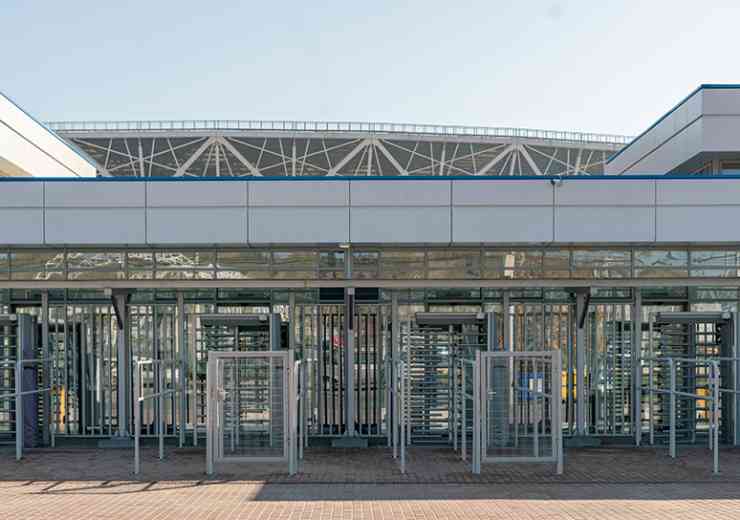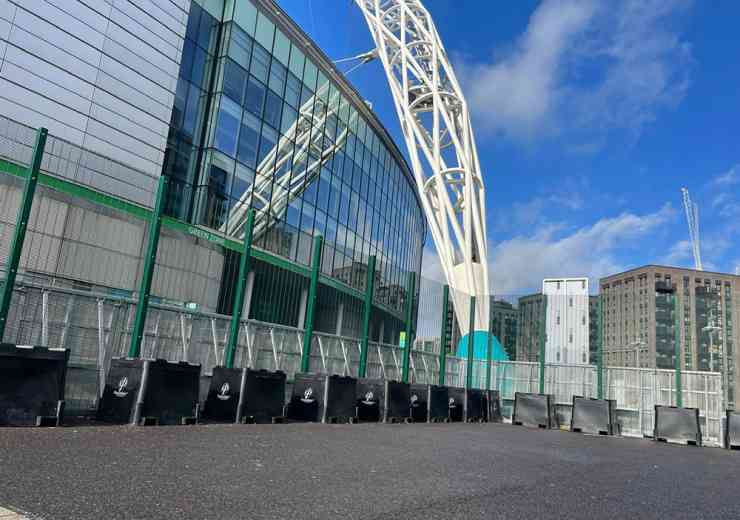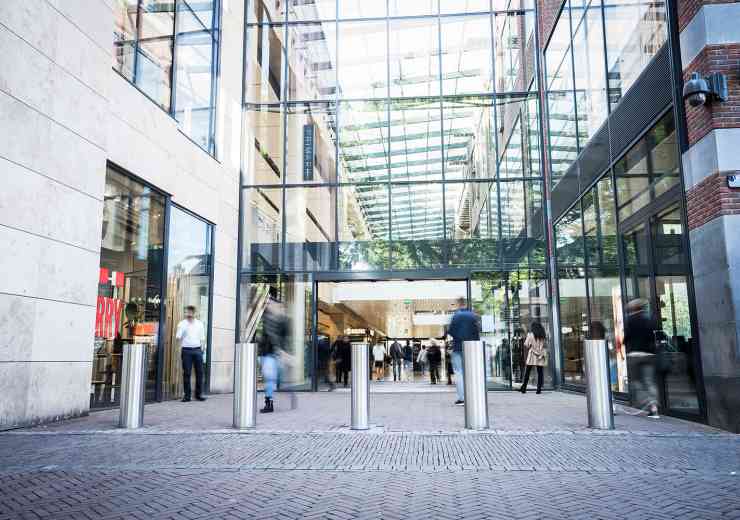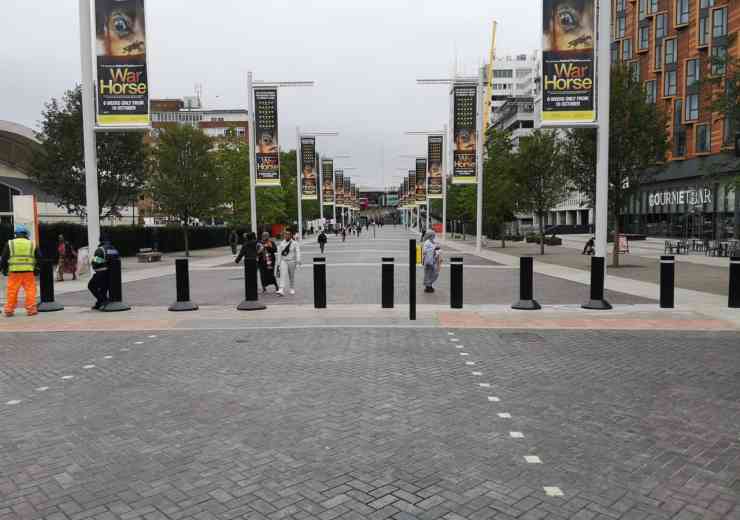Focusing on perimeter protection to combat the terrorist threat
 Given the continued heightened threat level in place in the UK, the ability to effectively secure the perimeter of a diverse range of vulnerable sites, as a first line of defence against potential terrorist attack, is undoubtedly a key concern for government agencies, the police and security managers on the ground.
Given the continued heightened threat level in place in the UK, the ability to effectively secure the perimeter of a diverse range of vulnerable sites, as a first line of defence against potential terrorist attack, is undoubtedly a key concern for government agencies, the police and security managers on the ground.
Whether the location in question is a transport hub – such as an airport or port – or another element of the critical national infrastructure, from power stations to oil terminals, it is imperative that integrated and robust security measures are in place. The modus operandi of terrorists is constantly evolving, as is their willingness to consider extreme measures, which could even involve chemical and radiological attacks. The reality is that terrorists will look to exploit any perceived vulnerability to their advantage, so constant vigilance remains a necessity.
Practical challenges
Significantly, many of the locations in question cover large geographical areas and, as a direct consequence, have extensive perimeters that need to be monitored around the clock. This should be part of an effective security strategy that seamlessly combines various systems and technologies so potential threats can be addressed in a timely manner.
There is also the challenge, for those who have to manage perimeter security, that some of the most vulnerable locations also have a high throughput of individuals who should legitimately be there – for instance passengers at an airport. Consequently, a key consideration here is achieving an appropriate balance that ensures round-the-clock security of clearly defined areas of a site, where only authorised personnel should have access. This needs to be done without infringing too negatively on visitors and staff, helping to maintain wider public support, which is critical to effective counter terrorism operations.
Looking more closely at the type of security measures that can be put in place to meet the need for the continued vigilance of site perimeters, there have undoubtedly been major developments in the ability to create a layered integrated defence strategy.
Effective perimeter security can therefore be achieved by combining technology – which can be deployed and managed to provide an early warning of suspicious activity – with physical security measures and manned guarding capabilities.
An eye on security
Undoubtedly, CCTV has a major role to play in keeping a watchful eye on critical perimeter areas as a deterrent and an active measure for early intervention. In recent times we have seen a growth in the take-up of HD (high definition) CCTV which, when in place, offers the potential to deliver a much greater level of detail of high risk areas, compared to conventional solutions, for example at site entrances and exits.
This greater clarity is invaluable when CCTV operators need to be able to distinguish between normal and suspicious activity, in a timely fashion, and allows them to pass on more detailed information to the authorities should police and other intervention be required.
Video analysis
In addition, many sites are now opting to deploy intelligent, proactive, CCTV measures such as VCA (video content analysis) – as evidenced by BSIA research conducted last year – otherwise know as video analytics. A key advantage with this approach is the ability to automatically analyse CCTV images, using powerful algorithms, against specific parameters to produce meaningful information about the content. This is invaluable when CCTV operators are faced with footage from hundreds of cameras.
An example of VCA in practice would be the setting up of a virtual tripwire at a site perimeter either as a measure where it is not possible to have a physical barrier or as an additional security layer. This basically creates a virtual line which, if someone crosses, will result in an alert being triggered. Other types of VCA include the identification of items that have been abandoned or removed, known as Object Left and Object Removed.
CCTV based ANPR (automatic number plate recognition) is also a useful perimeter protection and access control measure, ultimately ensuring that it is only authorised vehicles that can enter a location. To secure access to high risk buildings and other areas of a site – including entrances and exits – ‘smart’ technologies are being implemented. These measures range from access control cards using radio frequency identification (RFID) chips to allow the proximity reading of card details, to biometric-based systems with fingerprint readers and iris scanners.
Taking a remote view
Remotely monitored, detector-activated CCTV, which complies with the revised BS8418 standard, is finding favour to keep a watchful eye on sites out of hours, by linking in CCTV cameras and detectors, strategically positioned on the perimeter, to an RVRC (remote video response centre). In this set-up, should someone attempt to scale a fence they will be picked up by a detector and images from an associated CCTV camera will be sent to an operator at the RVRC.
The operator could potentially issue a verbal warning through on-site speakers to stop the intruder in their tracks – this tends to be a sufficient deterrent in over 90 per cent of cases. However, when considering potential terrorist involvement, it may be more advisable to take another tack and avoid letting the individual know that they have been detected. Instead, operators can covertly direct the authorities to the scene where they can take the appropriate measures to deal with the suspect.
Enhanced detection technologies
For enhanced surveillance some sites are now deploying infrared thermal imaging cameras, which can offer the potential for longer range detection of potential intruders. Where perimeters are extensive at sites such as ports or airports, which are prime terrorist targets, additional measures such as fence detection systems, UGS (unattended ground sensors) and even radar may form part of the security strategy.
Mobile assets are extremely flexible for perimeter security as practically they can be deployed to specific areas of vulnerability. This could be where points are not fully covered by the static infrastructure – for instance if refurbishment works are underway – or to provide another layer of security, whether it be mobile in-vehicle CCTV or manned patrols by security officers, or dog handlers.
There is little doubt that high visibility security patrols are able to provide a real deterrent, particularly when security personnel randomise their patrol routes to keep one step ahead of would-be attackers. They are also fundamental when it comes to responding to intruders and helping to ensure the safety of staff and members of the public who may be on-site during an incident.
With the extent of the security assets that can be readily implemented to keep sites safe and secure from terrorism, it is vital that as much attention is paid to ensuring that the right management systems are in place – such as a Graphical User Interface (GUI) in a control room with associated site plans – to deliver an effective situational overview of the information being provided by the CCTV, access control and other measures, so informed and timely action can be taken.
About BSIA
The British Security Industry Association (BSIA) is the professional trade association of the UK security industry. Its members produce over 70 per cent of the country’s security products and services to strict quality standards.
For more information
Tel: 0845 3893889
Web: www.bsia.co.uk
digital issue




















